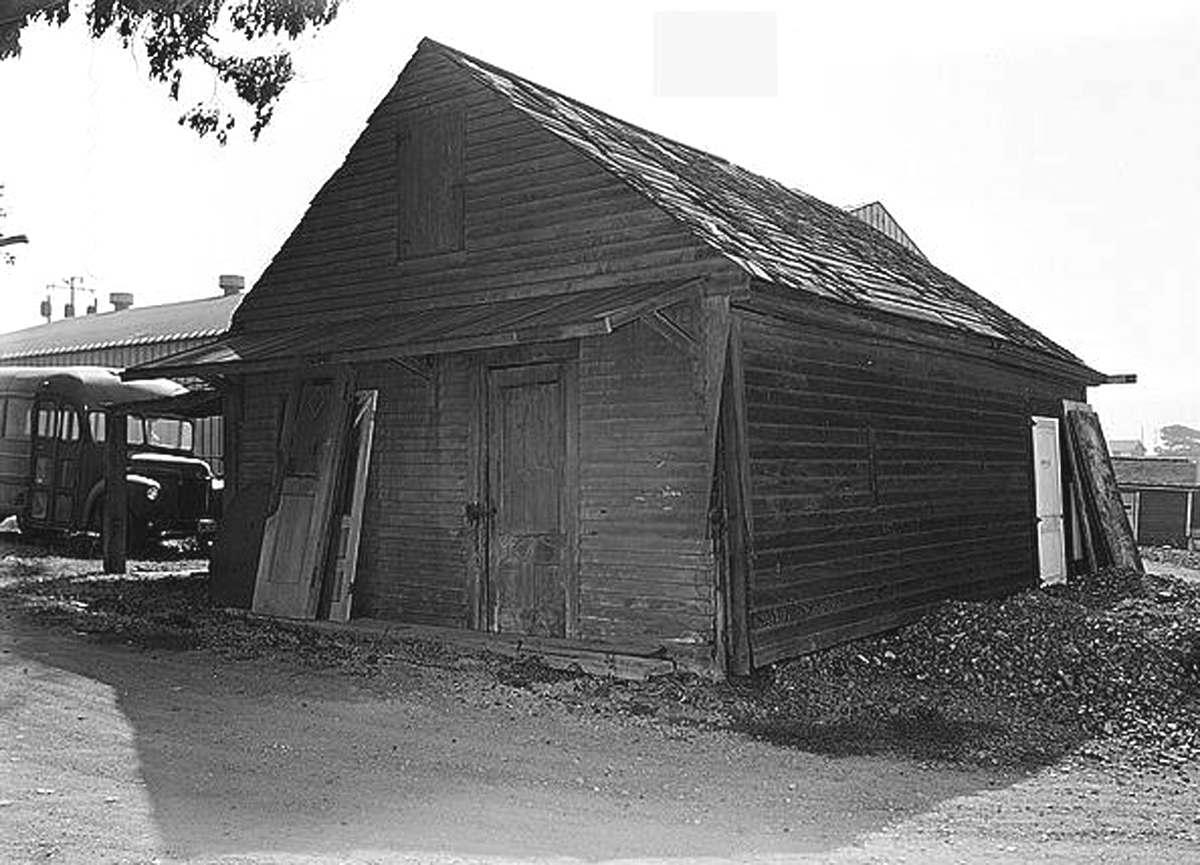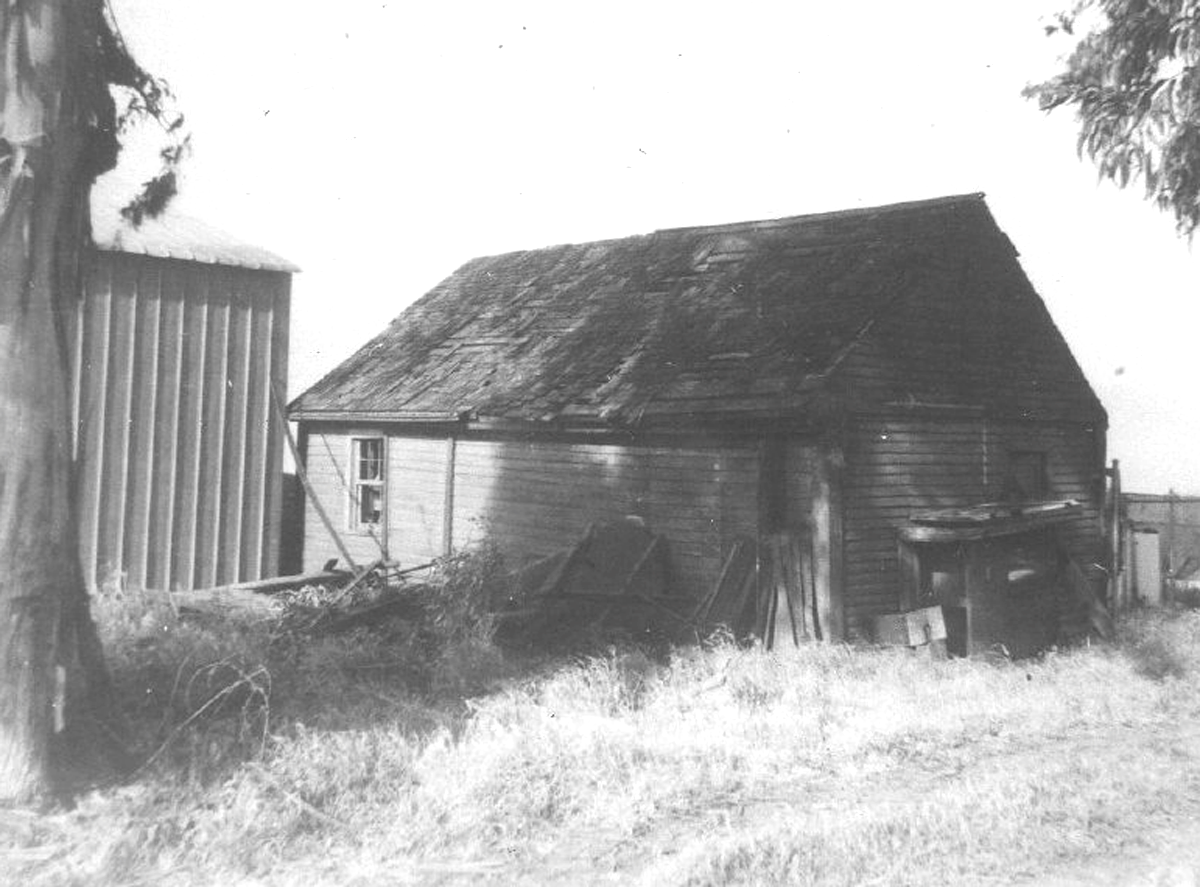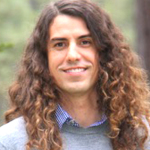Edward Von Pfister opened his general store and saloon in the little building, which is believed to be the place where a messenger on his way to Monterey in 1848 blabbed that his employer, John Sutter, had found gold in his Northern California mill.
It’s also remembered as a place where Benicians gathered to chat, to pick up their mail and newspapers and to shop, said Jerry Hayes, president of the Benicia Historical Society — which is why the group is striving to get the building on the National Register of Historic Places.
Instrumental in that effort has been David Hyde, a historical archeologist and Benicia High School board member who has been researching the old building’s history.
At a Benicia Historical Society meeting next week in the Camellia Tea Room, Hyde will talk about what he has learned.
He will describe the historical significance of the general store and tell stories of its proprietor, Captain E.H. Von Pfister. He will examine the story that the building was the place where Sutter’s emissary announced the discovery that led to the state’s famed Gold Rush.
He also will tell how the old building was important to the new city’s developing economics and society, and how it became a key in residents’ capitalizing on the area’s strategic geographic position during the early days of the Gold Rush.
Hyde also plans to give an update on the Historical Society’s progress in getting the building on the National Register of Historic Places.
Hayes said a lengthy process is under way as the group seeks to get the building recognized on a national level (it already is considered a state historic site).
First, he said, the Historical Society hired a San Francisco heritage architectural firm that previously researched the Commanding Officer’s Quarters and helped get recognition for the Presidio in San Francisco.
“We wanted them to do historical research on the Von Pfister General Store,” Hayes said, and among the assignments was for the firm to determine whether the Gold Rush announcement story is accurate or apocryphal.
The firm spent 95 hours trying to track down the story of the first announcement of the discovery that led to the California Gold Rush and tales of the ’49ers.
But the firm’s staff told the society that the Bancroft Library at the University of California-Berkeley was closed and unavailable for its use. They recommended instead that the building be considered an “archeological ruin” for registration purposes.Hayes said his group didn’t agree, because as a ruin the old building would be left as-is, and had no chance of restoration at any level.
He said the Historical Society instead wants national recognition of the old general store as a landmark site, a place associated with a significant event and a building associated with noted historic figures.
That could allow the group to raise money or seek grants to get the store interior stabilized and put in better condition with city cooperation, since the city of Benicia is the building’s actual owner, he said.
Hayes said he and Dr. Kerry Carney took a shot at writing the application themselves. “That didn’t work out well,” he said, explaining that the document was intricate and complicated, and the pair kept coming up short in the eyes of those reviewing the application.
They realized they would need someone more familiar with the process, and, “We happened onto David Hyde, a doctoral student at Cal-Berkeley,” Hayes said.
Hyde, a specialist in history and archeology, “took it on” — and not only that, Hyde met with Sacramento officials during the initial steps of the process.
“They listened to each other,” Hayes said.
Hyde succeeded where others had fallen short, and received positive state-level staff reviews.
Now, Hayes said, the next step is the State Historic Preservation Commission approval at its April 29 meeting in San Diego, after which the application will go to Washington.
Hayes said California-level staff has recommended the commission approve the application. Historically, once a state historic preservation commission asks for a place to be listed on the national register, the recommendation is accepted on the federal level.
“David did a lot of good stuff,” Hayes said.Hyde also looked into the story about Charles Bennett, who worked for Sutter, at whose sawmill gold was found in 1848. Once the shiny material found at the American River was determined to be gold, Sutter sent Bennett with 6 ounces of the stuff to Monterey to validate the land title. Bennett’s journey included an overnight stop in Benicia, and he spend much
of the layover in Von Pfister’s store and saloon.
Stories published about Benicia’s founding describe how some others at the saloon were bragging about finding oil and coal near Mount Diablo. At that point, Bennett is said to have opened his bag, dumped the contents on the bar and shouted, “That will beat your black gold!”
Hayes said Hyde has found several sources that back Benicia’s claim as the first place where the discovery of gold was announced.
The old building also is tied to Benicia’s founder, Dr. Robert Semple, who played key roles in California’s history.
Hayes said national recognition of the Von Pfister General Store isn’t the only goal of the Historical Society. Union Pacific Railroad just awarded the group a $5,000 grant to get a similar designation for the Southern Pacific Railroad Depot, 90 First St. “Most of that research has been done,” Hayes said.
David Hyde will speak at 7 p.m. Thursday, March 19, in the Camellia Tea Room, 828 First St.









It’s kinda cool how Benicia is a place where some people learned about the gold rush. I’ve never heard of it, and it’d be cool to see it restored or something. I also didn’t know that Robert Semple founded this city. I wonder what roles he played in California’s history. Your article makes me want to look up some Benician history.